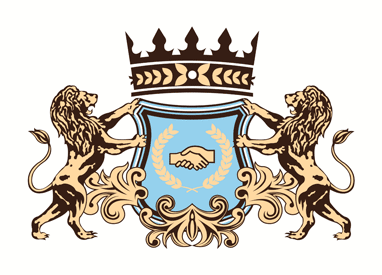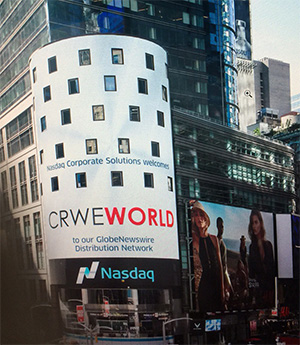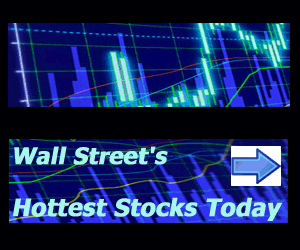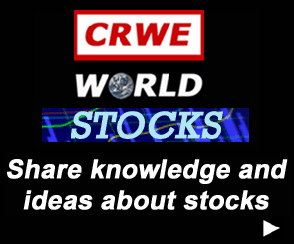Equinor fourth quarter and full year 2024 results
Equinor (OSE:EQNR, NYSE:EQNR) delivered adjusted operating income* of USD 7.90 billion and USD 2.29 billion after tax in the fourth quarter of 2024. Net operating income was USD 8.74 billion and net income was USD 2.00 billion, leading to adjusted earnings per share* of USD 0.63.
The fourth quarter and full year results were characterised by:
- Solid financial performance and 21% return on average capital employed* in 2024
- Strong operational performance with stable oil and gas production
- Continued industrial progress and value driven transactions
Capital distribution
- Proposed fourth quarter cash dividend of USD 0.37 per share
- Announced share buy-back of up to USD 5 billion for 2025
- Expected total capital distribution for 2025 of up to USD 9 billion
- Stronger expected free cash flow*, supporting sustained competitive capital distribution
Equinor is well positioned for stronger cash flow and growth:
- Strategy to deliver competitive shareholder returns. Consistent value driven execution - expecting above 15% return on average capital employed* towards 2030
- Strengthening free cash flow*, expecting USD 23 billion for 2025-2027 by reducing capex and addressing costs
- Increasing oil and gas production, expecting more than 10% growth from 2024-2027
- Reducing investments to renewables and low carbon solutions to around USD 5 billion in total after project financing for 2025-2027
- Lowering expected capacity in renewables to 10-12 gigawatt by 2030
Anders Opedal, President and CEO of Equinor ASA:
“Equinor is well positioned for further growth and competitive shareholder returns. We expect to deliver industry-leading return on average capital employed, above 15% all the way to 2030. Our oil and gas production outlook is increased to more than 10% growth from 2024 to 2027. We strengthen our expected free cash flow significantly compared to last year’s outlook. We do this by high-grading the portfolio, reducing the investment outlook for renewables and low carbon solutions and improving cost across our organisation.”
“Today we announce total capital distribution of up to USD 9 billion for 2025. Supported by stronger free cash flow, we expect to continue to grow the quarterly cash dividend and use share buy backs to ensure a competitive capital distribution also going forward.”
“We have a consistent growth strategy and our strategic direction remains the same. We continue to reduce emissions from our production and build profitable business in renewables and low carbon solutions towards our net zero ambition in 2050. By adapting to market situation and opportunities, we are set to create shareholder value for decades to come.”
“In 2024 we delivered solid financial results and high production through strong operational performance. We now expect the 2025 Johan Sverdrup production to be close to the level of the last two years. This shows how we work systematically to improve our producing assets to remain a safe and reliable provider of energy.”
Strong operational performance
Equinor had strong operational performance and stable production levels in the fourth quarter. The total equity production was 2,072 mboe per day, down from 2,197 mboe in the same quarter last year.
On the Norwegian continental shelf (NCS), production levels were sustained by the ramp-up of Breidablikk and the addition of new gas wells. However, the production levels are lower compared to the same period last year, due to natural decline, outage at Sleipner B and planned maintenance. For the full year, Equinor sustained high production level at the NCS, with record high production from the Troll and Johan Sverdrup fields.
The production at the Johan Sverdrup field is expected to continue to be close to 2023 and 2024 levels in 2025. The recovery rate ambition has been increased from 65% in the plan for development and operations to 75% now, including Johan Sverdrup phase 3. Effective turnarounds and lower unplanned losses contributed to the slight increase in production from the NCS in 2024 compared to 2023.
Internationally, the upstream business delivered lower production for the fourth quarter compared to the same period in 2023. The divestments in Azerbaijan and Nigeria, natural decline, higher turnaround activities and curtailments in the US contributed to the decline also for the full year. The decline was partially offset by the ramp up of new wells on stream and volumes from the Buzzard field in the UK.
In the quarter, Equinor completed 10 offshore exploration wells with 4 commercial discoveries. The Himalia and Cappahayden wells were expensed during the quarter.
The addition of onshore power plants in Brazil and Poland during 2023, along with the start-up of the Mendubim solar projects in 2024, contributed to a 19% increase in renewables power generation in the quarter and a 51% increase for the full year compared to the same periods in 2023.
Solid financial results in the fourth quarter
Equinor delivered adjusted operating income* of USD 7.90 billion. and USD 2.29 billion after tax* in the fourth quarter of 2024.
In the quarter, Equinor recognised net impairments of USD 280 million, primarily related to acquired early phase project rights within onshore markets in renewables.
Equinor realised a European gas price of USD 13.5 per mmbtu and realised liquids prices were USD 68.5 per bbl in the fourth quarter.
The Marketing, Midstream and Processing segment delivered solid results through equity and third-party LNG trading. These results were further supported by physical and financial trading of LPG.
A strong operational performance generated a cash flow from operating activities, before taxes paid and working capital items, of USD 9.81 billion for the fourth quarter. Cash flow from operations after taxes paid* ended at USD 3.91 billion for the fourth quarter, bringing the cash flow from operations after taxes paid* to USD 17.9 billion for the year.
Equinor paid two NCS tax instalments of a total of USD 5.78 billion in the quarter.
Organic capital expenditure* was USD 3.37 billion for the quarter, and USD 12.1 billion for the full year. Total capital expenditure was USD 5.41 billion for the fourth quarter and USD 16.7 billion for 2024.
After taxes, capital distribution to shareholders and investments, net cash flow* ended at negative USD 4.57 billion for the fourth quarter and at negative USD 12.2 billion for the full year. Equinor retains a strong financial position with net debt to capital employed adjusted ratio* at 11.9% by the end of the fourth quarter, compared to negative 2.0% at the end of the third quarter of 2024. The ratio is impacted by the Ørsted acquisitions and working capital effects over year-end to take advantage of commodity market situations.
Strategic progress
Equinor continues to develop the portfolio and deliver on its strategy in the quarter.
On the NCS, Equinor increased ownership to 69.5% in the Halten East Unit in The Norwegian Sea, an important project in a core area with strong profitability and low emissions. A discovery was made near the Fram field in the North Sea. The activity level on the NCS is high with 19 ongoing projects towards 2027.
The international portfolio will be strengthened by the agreement to establish UK’s largest independent oil and gas company with Shell. The new company is expected to produce over 140,000 barrels of oil equivalent per day in 2025 and play a crucial role in securing UK’s energy supply. Equinor increased its stake in the Northern Marcellus asset in the US and exited the upstream businesses in Azerbaijan and Nigeria.
A major milestone in the carbon capture and storage portfolio was realised with the final investment decision and financial close on two of UK’s first carbon capture and storage infrastructure projects.
The acquisition of a 10% stake in Ørsted was completed in the quarter giving Equinor exposure to premium offshore wind assets in operation and a solid project pipeline.
In 2024 Equinor added proved reserves mainly through estimate revisions, transactions and improved recovery projects. The reserve replacement ratio (RRR) in 2024 was 151%.
Absolute scope 1+2 GHG emissions for Equinor’s operated production, on a 100% basis, were 11.0 million tonnes CO2e in 2024. This represents a decrease of 0.60 million tonnes CO2e compared to last year.
The twelve-month average serious incident frequency (SIF) for the period was 0.3, a decrease from 2023. The 2024 result represents the lowest frequency on record.
Competitive capital distribution
The board of directors proposes to the annual general meeting an ordinary cash dividend of USD 0.37 per share for the fourth quarter 2024, an increase of USD 0.02 per share from the third quarter of 2024, in line with previously announced ambition. The Equinor share will trade ex-dividend on Oslo Børs from and including 15 May and New York Stock Exchange from and including 16 May 2025.
The interim cash dividends for the first, second and third quarter of 2025, are to be decided by the board of directors on a quarterly basis and in line with the company 's dividend policy, subject to existing and renewed authorisation from the annual general meeting, and are expected to be at the same level as for the fourth quarter of 2024.
The fourth tranche of the share buy-back programme for 2024 was completed on 14 January 2025 with a total value of USD 1.6 billion. Following this, the total share buy-backs under the share buy-back programme for 2024 amounts to USD 6 billion.
The board of directors has decided to announce share buy-back for 2025 of up to USD 5 billion in total to conclude the two-year programme for 2024–2025. The 2025 share buy-back programme will be subject to market outlook and balance sheet strength. The first tranche of up to USD 1.2 billion of the 2025 share buy-back programme will commence on 6 February and end no later than 2 April 2025. Commencement of new share buy-back tranches after the first tranche will be decided by the board of directors on a quarterly basis in line with the company 's dividend policy and will be subject to existing and new board authorisations for share buy-back from the company 's annual general meeting and agreement with the Norwegian State regarding share buy-back.
All share buy-back amounts include shares to be redeemed by the Norwegian state.
Capital markets update: Firm strategic direction - stronger free cash flow* and growth
Equinor maintains a firm strategic direction and has taken action to strengthen free cash flow* and returns(1). With a profitable project portfolio and strict capital discipline, Equinor expects to deliver high-value production growth in selected markets creating value for shareholders.
Key messages:
- Firm strategy – high returns: Remaining value driven in the execution. Expecting return on average capital employed* above 15% to 2030
- Strengthening free cash flow*: Expecting strengthened free cash flow* to USD 23 billion for 2025 - 2027 by reducing capex and addressing costs
- Increasing production growth: Expecting above 10% oil and gas production growth driven by developing an attractive project portfolio and value adding transactions, increasing expected 2030 production from 2 to 2.2 million boe per day
- Building resilient business for the future: Lowering investment outlook for renewables and low-carbon solutions to adapt to market conditions and further strengthen value creation for shareholders. Lowering 2030 renewable capacity ambition to 10-12 gigawatt including financial investments, and introducing range for ambition for net carbon intensity reduction. Maintaining strategic direction towards net zero
Growth in free cash flow*
Equinor has significantly increased the free cash flow* outlook by reducing investments and addressing costs. Expected organic capital expenditure* of USD 13 billion for 2025 and on average for the period 2025–2027. After project financing of Empire Wind I, organic capital expenditure* is expected at USD 11 billion for 2025 and on average USD 12.5 billion for 2026–2027.
Stronger free cash flow provides capacity for Equinor to continue to deliver competitive capital distribution.
Equinor also strengthens its resilience and can be cash flow neutral after all investments at an oil price around 50 dollars per barrel.
Oil and gas - delivering long term value
Equinor expects an oil and gas production growth of above 10% from 2024 to 2027. In 2030 expected production is around 2.2 million boe per day, up from previous expectation of around 2 million. For the NCS, production is expected to maintain at a high level of around 1.2 million boe per day all the way to 2035.
Equinor will continue to develop existing fields and an attractive project portfolio both on the NCS and internationally. Driving increased recovery and exploration near infrastructure is expected to bring high value volumes with short lead time, low cost and low emissions.
From the international upstream portfolio, Equinor expects the annual free cash flow* to grow to more than USD 5 billion in 2030.
A CO2 intensity* around 6 kg per boe is expected by 2030 and the company is on track to deliver on the 2030 ambition of net 50 percent reduction in operated scope 1 and 2 CO2 emissions.
Renewables and low carbon - adjusting ambitions to realities
Equinor has high-graded the project portfolios in renewables and low carbon solutions, and reduced cost and early phase spend to improve the value creation for shareholders.The portfolio is expected to deliver more than 10% life-cycle equity returns. For renewables, the ambition for installed capacity is reduced to 10-12 gigawatt by 2030, including the Ørsted and Scatec ownership positions.
Equinor demonstrates a leading position in carbon capture and storage and has projects with a storage capacity of 2.3 million tonnes CO2 installed or under development. The ambition to store 30-50 million tonnes of CO2 per annum by 2035 is maintained, and Equinor has secured licenses with capacity to store more than 60 million tonnes annually.
To underline that value creation is at the core of decision making, the ambition to allocate 50% of gross capital expenditures to renewables and low carbon solutions by 2030 is retired.
Updated Energy transition plan
The Energy transition plan describes how Equinor creates value, cuts emissions and develops new energy solutions to reach net zero by 2050. The ambition for cutting scope 1 and 2 emissions by 50% within 2030 is upheld.
The pace of transition depends on frame conditions and market opportunities to create value. Adjusting to the market situation and opportunity set, the range for the net carbon intensity (NCI) ambition will be 15-20% in 2030 and 30-40% in 2035.
Updated outlook for 2025:
- Organic capex expenditures* are estimated at USD 13 billion for 2025 (2).
- Oil & gas production for 2025 is estimated to grow 4% compared to 2024 level.
This press release contains Forward Looking Statements. Please see the Forward Looking Statement disclaimer published on Equinor.com/investors/cmu-2025-forward-looking-statements.
- - -
* For items marked with an asterisk throughout this report, see Use and reconciliation of non-GAAP financial measures in the Supplementary disclosures.
(1) All forward looking financial numbers are based on Brent blend 70 USD/bbl, Henry Hub 3.5 USD/MMBtu and European gas price 2025: 13 USD/MMBtu, 2026: 11 USD/MMBtu and thereafter: 9 USD/MMBtu
(2) USD/NOK exchange rate assumption of 11
- - -
Further information from:
Investor relations
Bård Glad Pedersen, Senior vice president Investor relations,
+47 918 01 791 (mobile)
Press
Sissel Rinde, Vice president Media relations,
+47 412 60 584 (mobile)
This information is subject to the disclosure requirements pursuant to Section 5-12 of the Norwegian Securities Trading Act
Attachments

© 2025 GlobeNewswire, Inc. All Rights Reserved.



















